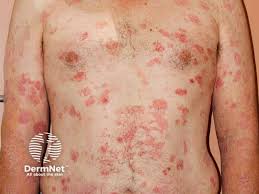Patient enrollment is open for a confirmatory Phase 3 study evaluating HyBryte (synthetic hypericin) for cutaneous T-cell lymphoma (CTCL).
HyBryte is a novel, first-in-class, photodynamic therapy utilizing safe, visible light for activation. The active ingredient in HyBryte is synthetic hypericin, a potent photosensitizer that is topically applied to skin lesions that is taken up by the malignant T-cells, and then activated by safe, visible light approximately 24 hours later. The use of visible light in the red-yellow spectrum has the advantage of penetrating more deeply into the skin and therefore potentially treating deeper skin disease and thicker plaques and lesions. This treatment approach avoids the risk of secondary malignancies (including melanoma) inherent with the frequently employed DNA-damaging drugs and other phototherapy that are dependent on ultraviolet exposure. Combined with photoactivation, hypericin has demonstrated significant anti-proliferative effects on activated normal human lymphoid cells and inhibited growth of malignant T-cells isolated from CTCL patients. HyBryte has received orphan drug and fast track designations from the U.S. Food and Drug Administration (FDA), as well as orphan designation from the European Medicines Agency (EMA).
The new study (Fluorescent Light Activated Synthetic Hypericin 2, FLASH2), builds on the previous statistically significant Phase 3 (FLASH) study, as well as a recent successful comparative study (HPN-CTCL-04) and an ongoing investigator-initiated study, each further supporting the design of the FLASH2 clinical trial.
“In the Phase 3 FLASH study, HyBryte was shown to be efficacious in early stage CTCL with a promising safety profile,” says Ellen Kim, MD, Director, Penn Cutaneous Lymphoma Program, Vice Chair of Clinical Operations, Dermatology Department, Professor of Dermatology at the Hospital of the University of Pennsylvania, and Lead Investigator of the FLASH2 study, in a news release. “We look forward to demonstrating the expanded positive impact of the use of HyBryte in a more “real world” setting with 18-weeks of continuous treatment in this 80-patient study. Our ongoing investigator-initiated study and study HPN-CTCL-04, both demonstrated an improved treatment response at 18 weeks and 12 weeks, respectively, relative to the 6-week primary endpoint in the first FLASH study.”
FLASH2 is a randomized, double-blind, placebo-controlled, multicenter study that will enroll approximately 80 subjects with early-stage CTCL. The study replicates the double-blind, placebo-controlled design used in the first successful Phase 3 FLASH study that consisted of three 6-week treatment cycles (18 weeks total), with the primary efficacy assessment occurring at the end of the initial 6-week double-blind, placebo-controlled treatment cycle (Cycle 1). However, this second study extends the double-blind, placebo-controlled assessment to 18 weeks of continuous treatment (no “between-Cycle” treatment breaks) with the primary endpoint assessment occurring at the end of the 18-week timepoint. In the first Phase 3 study, a treatment response of 49% was observed in patients completing 18 weeks (3 cycles) of therapy. In this second study, all important clinical study design components remain the same as in the first FLASH study, including the primary endpoint and key inclusion-exclusion criteria. The extended treatment for a continuous 18 weeks in a single cycle is expected to statistically demonstrate the effect of HyBryte over a more prolonged, “real world” treatment course.
PHOTO CREDIT: DermNet


